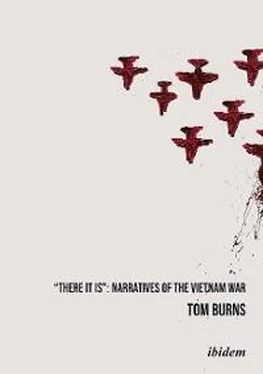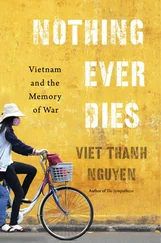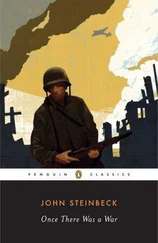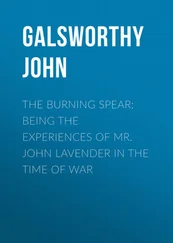Tom Burns - There It Is - Narratives of the Vietnam War
Здесь есть возможность читать онлайн «Tom Burns - There It Is - Narratives of the Vietnam War» — ознакомительный отрывок электронной книги совершенно бесплатно, а после прочтения отрывка купить полную версию. В некоторых случаях можно слушать аудио, скачать через торрент в формате fb2 и присутствует краткое содержание. Жанр: unrecognised, на английском языке. Описание произведения, (предисловие) а так же отзывы посетителей доступны на портале библиотеки ЛибКат.
- Название:There It Is: Narratives of the Vietnam War
- Автор:
- Жанр:
- Год:неизвестен
- ISBN:нет данных
- Рейтинг книги:5 / 5. Голосов: 1
-
Избранное:Добавить в избранное
- Отзывы:
-
Ваша оценка:
- 100
- 1
- 2
- 3
- 4
- 5
There It Is: Narratives of the Vietnam War: краткое содержание, описание и аннотация
Предлагаем к чтению аннотацию, описание, краткое содержание или предисловие (зависит от того, что написал сам автор книги «There It Is: Narratives of the Vietnam War»). Если вы не нашли необходимую информацию о книге — напишите в комментариях, мы постараемся отыскать её.
There It Is: Narratives of the Vietnam War — читать онлайн ознакомительный отрывок
Ниже представлен текст книги, разбитый по страницам. Система сохранения места последней прочитанной страницы, позволяет с удобством читать онлайн бесплатно книгу «There It Is: Narratives of the Vietnam War», без необходимости каждый раз заново искать на чём Вы остановились. Поставьте закладку, и сможете в любой момент перейти на страницу, на которой закончили чтение.
Интервал:
Закладка:
The US government apparently wanted to maintain the war at a low social profile. Medical deferments, for example, were easier to obtain by the more socially and economically privileged classes, and college students were exempted from military service through a policy of draft-deferments for those who were able to maintain a certain grade-point average in their classes. 58As the war ground on and the need for manpower increased, these socially-selective policies were not relaxed; on the contrary, the government continued to resort to the underprivileged, its primary replacement depot. Secretary McNamara’s program known as “Project 100,000” was designed to call up an additional 300,000 men who had been previously rejected from the armed forces because of low test scores. Through this program, youths of the underclass (80% high-school dropouts, 40% African Americans), would be given the opportunity to acquire employable skills and, incidentally, go to war in the place of students and reservists. These men did go to war (half of all the men who had entered the program did so, more than a third directly into combat), and they were both court-martialed and killed at twice the usual rate without acquiring the promised skills. 59
It is notable that the patriotic motives (stop Communism, promote freedom) cited as the nation’s justification for going to war were admitted by only 11% of the enlisted men who volunteered in 1964 (a percentage that dropped to 6.1% four years later, when the war was more unpopular). Appy lists a variety of other motivations, social and cultural, that were given by the men who joined the armed forces: a) escape (bad home, mean streets, the police); b) a strong need, however undefined, for self-affirmation; c) solidarity with high-school and working-class buddies; d) a job-prospect in a future perceived as generally hopeless; e) assimilation of the media culture (especially war movies); f) pressure from fathers, uncles, and other men who had fought in previous wars; and g) a traditional cultural assumption of war as a rite-of-passage to manhood. 60It can be readily perceived that these various motivations may be interlocking joint influences, for example, (a), (b) and (d), or (e), (f) and (g).
Once these men, whatever their true motivations, were in the Armed Forces, they were taught, as part of the military’s indoctrination program, that they were helping an Asian nation to resist Communism, preserve democracy, and protect freedom. Their actual war experiences, however, contradicted those expressed aims at every turn. Communism turned out to have widespread popular support in both North and South Vietnam, even while the soldiers were told they were saving South Vietnam from Communist aggression. Accordingly, in the fiction of the war, the need to stop Communism tends to be invoked only by officers and “lifers,” as career soldiers were contemptuously called in the Army by the others, as if a career in the Army was a life sentence.
Soldiers newly arrived “in-country” learned that South Vietnamese civilians were often Vietcong or Vietcong sympathizers, and they naturally began to ask themselves why the South Vietnamese should be saved from an enemy with which they were in such obvious sympathy. Even worse, there was no training, or, for that matter, no accurate method for telling the difference between friend and foe, a circumstance that greatly increased the American soldier’s anxiety and suspicion towards his supposed allies. 61While the obstinate silence of the civilians whom the troops were supposed to be protecting was an important advantage enjoyed by the NLF (Vietcong), it was a source of constant frustration to the American soldiers trying to glean information about its intentions, whereabouts, and movements.
Given these circumstances, the veterans who emerged from this war were, in a number of important ways, unlike those of previous wars. There was a high rate of desertion. For those men who had terminated their tours, as many as 70,000 suffered from Post Traumatic Stress Disorder (P.T.S.D.), a condition that in previous wars had been known as “shell shock” or “combat fatigue.” In addition, material and psychological problems resulting from the shortage of jobs in a less responsive economy, as well as an often hostile civilian reception, made it more difficult for these returnees to readjust to civilian life. Citing one indicator of social and psychological maladjustment to civilian life, Walter Capps claims that there were as many suicides among veterans from 1975 to 1990 as combat deaths in the war itself. 62
For his part, Samuel Hynes has called the labeling of Vietnam veterans as victims one of the war’s necessary myths:
The story has been absorbed into the Vietnam story for the same reason that all war myths are accepted—because it gives events a comprehensible shape that is consistent with the myth of the war itself—the Bad War that was lost. Because the war was wrong, because children were killed and a country was devastated, men who fought there were devastated too. 63
In support of his hypothesis of the myth of the veteran-victim, Hynes goes on to quote statistics showing that most men who went to Vietnam were not damaged by the experience and so their stories “have not entered the canon of Vietnam memoirs.” 64But one may legitimately ask how many men from this undamaged majority were actual combatants. Apart from the difficulty of assessing psychological damage, especially of men who do not overtly complain of it, the acceptance by veterans of their experience is perhaps true of any war, but it is also true that a great many Americans who fought in World War II and were supported by virtually the entire nation were also psychologically damaged—more, in fact, than were actually killed.
Many people, including veterans of earlier wars, have scorned the Vietnam vets as “losers” and “crybabies,” but the distress of these men was real and may partly be explained by the unique circumstances of the war. Psychological research has shown that killing in war actually causes more distress than the fear of being killed or seeing other men killed. General S.L.A. Marshall, the US Army’s chief military historian during World War II, found that the majority of men in combat did not even fire their weapons: “Fear of killing, rather than being killed, was the most common cause of battle failure in the individual,” Marshall wrote in his influential study Men Against Fire (1947), citing cultural upbringing and religious education against the taking of human life as the cause. 65
Marshall’s findings were incorporated by the US Army into new training techniques to teach soldiers how to perceive their enemies as “targets” rather than as people and therefore be more willing to fire upon them. Trainees were also taught to fire at an area target like bushes or clumps of trees, rather than recognizable individuals, a technique facilitated by the newer, fully automatic weapons. 66The revised training regime was successful: by the time of the Vietnam War, as many as 90% of the men were firing their weapons. The technical success, however, had a psychological price: a study of veterans (1999) found that soldiers who had killed, or believed they had killed, people in combat had higher rates of P.T.S.D. 67
Another way of making soldiers more willing to kill their declared enemies is through demonization, a technique that is more effective when dealing with a racial “other.” The Japanese during World War II, for example, were represented in propaganda as sub-human and so especially worthy of being killed. The Vietnamese enemy were subject to similar perceptions: dehumanizing epithets such as “gooks,” “dinks,” “slopes” and the like were routinely used among soldiers (as can be constantly seen in the fictional literature), and, like the Japanese in the former war, the Vietnamese enemy was seen as treacherous and fanatical, but there may be other cultural factors at work here that go beyond prejudice and racism. Jonathan Shay sees the roots of the demonization of the enemy in Biblical texts, using as illustration I Samuel 17, the story of David and Goliath, which he argues shows David’s lack of respect for his enemy. Shay’s contrasts this Biblical text with the duel of Hector and Ajax, in Homer’s Iliad , where neither warrior shows disrespect for the other. 68
Читать дальшеИнтервал:
Закладка:
Похожие книги на «There It Is: Narratives of the Vietnam War»
Представляем Вашему вниманию похожие книги на «There It Is: Narratives of the Vietnam War» списком для выбора. Мы отобрали схожую по названию и смыслу литературу в надежде предоставить читателям больше вариантов отыскать новые, интересные, ещё непрочитанные произведения.
Обсуждение, отзывы о книге «There It Is: Narratives of the Vietnam War» и просто собственные мнения читателей. Оставьте ваши комментарии, напишите, что Вы думаете о произведении, его смысле или главных героях. Укажите что конкретно понравилось, а что нет, и почему Вы так считаете.












